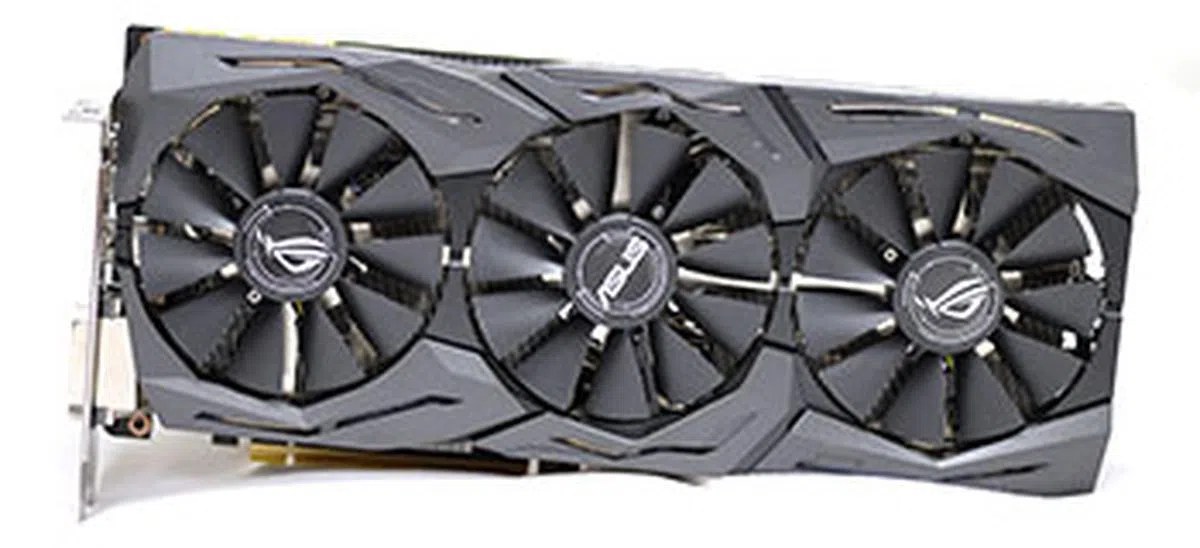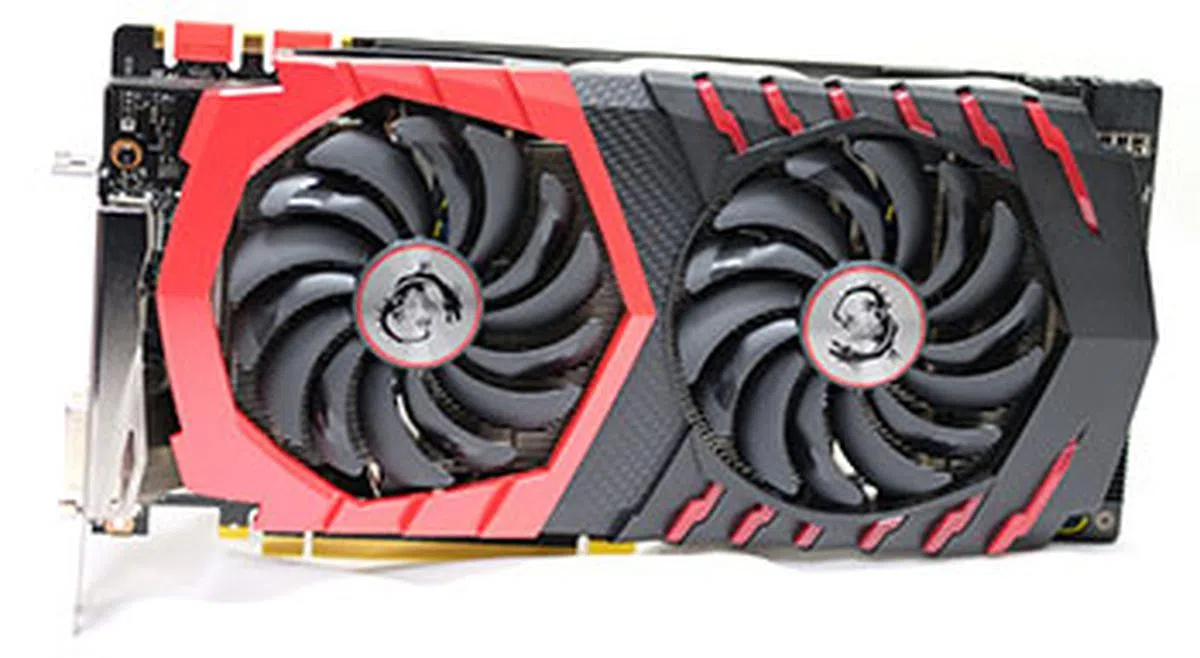NVIDIA GeForce GTX 1080 shootout: Slugging it out at the top
The NVIDIA GeForce GTX 1080 is the best card you can buy on the market now (discounting the new Titan X aimed at deep learning researchers). That said, it isn't always lonely at the top, and there are plenty of custom cards for you to choose from. We round up cards from ASUS, MSI, and Palit and put them to the test.
Vying for the wallets of enthusiasts
The NVIDIA GeForce GTX 1080 is the most powerful graphics card on the planet for consumers. There’s just no disputing that at this point now. Sure, there’s the new Titan X card, but that is a US$1,200 monster that is targeted more at researchers and organizations working in the fields of artificial intelligence and deep learning.
NVIDIA also chose to announce the Titan X during a meetup of deep learning experts at Stanford University, a clear signal that it isn’t going after consumers with the card. That said, the GeForce GTX 1080 will probably be the go-to card for the vast majority of enthusiasts looking to build a gaming rig that will tear through literally any game today.
With performance that exceeds that of the old Titan X, NVIDIA’s flagship Pascal card offers one of the most tantalizing jumps in performance in just a single generation.
And even though the reference cards have now been repackaged as fancier Founders Edition models, gamers will probably find themselves gravitating toward custom cards from NVIDIA’s board partners. These come with the usual bells and whistles like beefed-up coolers, dazzling (or not) LED lighting effects, and factory overclocks.
But because they’re all based on the same GP104 GPU, things like design, cooling performance, and various value-added features matter more. To that end, we’ve rounded up cards from ASUS, MSI and Palit and pit them against each other to tease out a winner (Unfortunately, we didn’t get a chance to review a contender from Gigabyte’s end because of supply issues).
ASUS ROG Strix GeForce GTX 1080 OC

The dark aesthetic of the ROG Strix GeForce GTX 1080 OC will appeal to those looking for something a bit more subtle.
ASUS has applied a nearly identical feature set across all of its ROG Strix Pascal cards. The ROG Strix GeForce GTX 1080 OC looks extremely similar to the ROG Strix GeForce GTX 1060 OC we reviewed earlier, but that’s where the similarities end.
This card is one of the most aggressively clocked custom GeForce GTX 1080 cards on the market now, with a base clock of 1,784MHz and boost clock of 1,936MHz in OC mode. By default, the card ships in Gaming mode, with a base clock of 1,759MHz and boost clock of 1,898MHz. That said, we see little reason why you shouldn’t just use the ASUS GPU Tweak II utility to bump the card up to OC mode, since whatever power savings (or quieter operation for that matter) you get will probably be negligible.

Here's a quick snapshot of the card's specifications in OC mode.
In comparison, the GeForce GTX 1080 Founders Edition has a base clock of 1,607MHz and boost clock of 1,733MHz. This amounts to a 177MHz, or 11 per cent, overclock over stock speeds. While you could argue that you’d be able to overclock the Founders Edition card by the same amount, you can’t say for sure that it will be stable, but getting a custom card like this ASUS model guarantees that your card will work at these speeds.
In order to keep the card running cool, ASUS has gone with a fairly hefty DirectCU III cooling solution comprising five copper heatpipes and a metal plate that comes into direct contact with the memory chips. The heatpipes are in direct contact with the GPU as well, which supposedly helps with more efficient heat transfer away from the chip. What’s more, they branch out from the GPU to different areas of the heatsink fins to better utilize all the available area (the heatsink itself is actually quite massive).
To cap things off, the cooler itself features three semi-passive fans that span the entire length of the heatsink, the better to make use of all the available surface area for cooling and boost airflow.

The three wing-blade fans are designed for improved static pressure.
Like most other cards today, the ASUS card also features a solid metal backplate, with a RGB backlit ROG logo splashed on top. The backplate does a lot for the card’s aesthetics, but it serves a functional purpose as well. For one, the triple-fan DirectCU III solution and massive heatsink adds quite a lot of weight to the card, and the backplate provides some much needed structural reinforcement.

The ROG logo on the backplate will light up when the card is powered on.

You can also customize the lighting color of the ROG logo on the side.
Cooling aside, one of the standout features on the card is what ASUS has dubbed its FanConnect technology, which takes the form of two 4-pin fan headers at the end of the card. You’ll be able to connect your case fans to these headers and set them to vary their speed according to the GPU load, quite a nifty feature that lets you peg airflow to one of the key heat-generating components in your chassis.
As it stands, ASUS is the only vendor on the market to offer this, which scores it some points in the features department.

The two 4-pin FanConnect headers are located at the end of the card.
The power delivery circuit has also been upgraded over that on the Founders Edition card. The ROG Strix GeForce GTX 1080 features an 8+2 phase design, compared to a 5-phase implementation on the reference model. In theory, this should mean smoother power delivery, lower load temperatures on the power delivery components and more stable overclocks.
To help you achieve higher overclocks, ASUS has also included an additional 6-pin power connector to raise the power draw ceiling. This provides an additional 75 watts of power, for a total draw of around 300 watts.

The additional 6-pin PCIe connector provides an extra 75 watts of power.
Round the back, the card has two HDMI ports, two DisplayPort outputs, and one DVI connector. This is a slight departure from the standard layout, and ASUS has actually replaced one of the DisplayPort connectors with an HDMI one. This was done for the benefit of VR gamers, who can now plug in both monitor and headset over HDMI without needing to hunt for an adapter or separate display cable.

The extra HDMI port allows VR gamers to plug in both headset and monitor over HDMI.
The ASUS GPU Tweak II software also comes with all the tools you’ll need to overclock the card. This includes a built-in overclocking utility with voltage controls, a monitoring window, and easy-to-access tabs to switch between the three different clock speed modes.

You can do all your overclocking from within the GPU Tweak II software.

Here's a look at the more granular overclocking controls available.
Finally, LED color customization is done separately in the ASUS Aura app, where you can choose from a wide range of colors and lighting effects. You can even set the lights to pulse in time with your music or change color according to GPU temperature.

You can customize the lighting effects on the card using the ASUS Aura utility.
MSI GeForce GTX 1080 Gaming X 8G

The MSI GeForce GTX 1080 Gaming X 8G runs extremely quiet.
We’ve already reviewed the MSI GeForce GTX 1080 Gaming Z 8G, and today’s Gaming X card is more or less just a lower clocked version of the former card. Naming similarities aside, the two also look nearly identical (save for certain differences on the backplate), so it’s really just the clock speeds that differentiate the two cards.
While the Gaming Z card comes with a 1,771MHz base clock in OC mode, the Gaming X card has a more modest 1,708MHz base clock.

Here's a quick look at the card's specifications.
The red-and-black Twin Frozr VI cooler is a familiar sight, and the translucent ridges on the cooling shroud will glow a fierce red when the card is powered on. However, the thermal solution actually differs quite a bit from the ASUS card. While the latter opted for five direct contact heatpipes, MSI has chosen to make use of six heatpipes that meet at a square GPU baseplate. The heatpipes are also flattened where they meet the baseplate to maximize the contact area.

In addition to the cooling shroud, the MSI logo on the card's side features an LED backlight as well. This can be customized according to your color of choice.
In addition, the base plate itself is built from what MSI says is nickel-plated anti-oxidized copper that is designed to perform consistently even after long hours of high temperatures.
The heatsink spans the entire length of the card as well, and MSI has gone to great lengths to ensure that there’s sufficient airflow and static pressure to keep temperatures down. MSI cards have always been one of the quietest on the market, thanks in large part to its Torx fans which have so far outdone most of its competitors.

The Torx 2.0 fans utilize double ball bearings for better longevity and reliability.
The new Torx 2.0 fans are a key part of the upgrades MSI made to its new Twin Frozr VI cooler. The 14-blade fans actually feature two different types of blades – steeper and more curved dispersion blades and regular fan blades. The former helps speed up airflow, while the latter pushes air through the heatsink. And if your GPU temperature is below 60 degrees Celsius, they’ll power down entirely.
More significantly, the fans now feature double steel ball bearings. The performance of more common sleeve bearing fans is known to deteriorate more easily over time as the oil in the bearings dries out, and this decline is accelerated when the fan is mounted in any orientation other than vertical (graphics cards fans are mounted horizontally when considering the vertical tower orientation). In comparison, the longevity of double ball bearing fans is not affected by the mounting orientation, and they use thicker lubricants that are less susceptible to evaporation.
We can attest that this is the quietest card of the lot, and it’s impressive how MSI has managed to keep noise levels down while maintaining cooling performance.
That said, one thing to note is that this is a fairly broad and heavy card. At 140mm across, it’s one of the wider cards we’ve seen, and you’ll be glad for the extra support the metal backplate provides. If you’re looking to install this in a narrow chassis, you’ll want to double check the allowance available.

The metal backplate provides structural support for the card and sports a subtle dragon decal on the top.
Like the ASUS card, MSI has also gone for with an additional 6-pin PCIe power connector, and an upgraded 8+2 phase power delivery circuit, for greater overclocking headroom and stability.

The extra 6-pin power connector provides additional headroom for overclocking.
The display connectors remain untouched over the reference design, and you’ll find three DisplayPort connectors, one HDMI port, and one DVI output.

There's no extra HDMI port here, and the selection of display connectors is the same as on the Founders Edition model.
The MSI Gaming App lets you switch between the different clock speed profiles, and they’re the first thing you see when you fire up the app. Clicking the LED icon also brings up the lighting control panel, where you can customize the RGB lights to suit your preference.
However, the interface of the Gaming App feels comparatively more clunky and less intuitive. For instance, it’s not immediately apparent what the icons at the top do, and we had to click them to find out. Still, once you figure everything out, there are nifty features available, like an OSD that displays GPU information that works in games like Overwatch.

The MSI Gaming App lets you switch between different clock speed profiles very easily.

You also have access to quite a wide range of lighting effects and styles.
Palit GeForce GTX 1080 GameRock Premium Edition

The Palit GeForce GTX 1080 GameRock Premium Edition is part of Palit's brand new GameRock series of cards.
Palit’s card is one of the more interesting custom GeForce GTX 1080s on the market, if only because it represents a brand new series from the company. The GeForce GTX 1080 GameRock Edition was a new complement to Palit’s longstanding JetStream series of cards, and was marketed at a different audience.
As the name suggests, the GameRock cards are targeted at gamers, or more specifically those who want the best possible performance out-of-the-box. To this end, the cards are clocked higher than their equivalent JetStream counterparts,
There are actually two models of GameRock cards. Our review unit was the higher clocked Premium Edition card, which had a base clock of 1,746MHz and boost clock of 1,885MHz.

Here's a quick look at the card's specifications.
This is a card that stands out in a lot of ways, and not all of them good. We’ll get what we don’t like out of the way first, before focusing on the good stuff. For one, this is a 2.5 slots wide card, which means you’ll actually need three slots on your motherboard to install it. While the rear I/O plate is still the same width as other dual-slot cards, the cooler's shroud protrudes below it and is responsible for the extra thickness.

Here's a look at how much thicker the Palit card is than the dual-slot MSI GeForce GTX 1080 Gaming X 8G.
That could still be somewhat justified if the card turned out to be a lot cooler than its rivals, but that wasn’t the case, as we’ll see in our temperature testing results in the next section. Furthermore, the card can get quite noisy when under load, and we’re finding it difficult to say that you’re reaping any significant benefit at all from the thicker cooler.
But to be fair, the cooler does come with certain improvements over the previous generation, and it was the coolest out of all our tested cards, even if it was just by a single degree. Palit increased the fin density on the heatsink to provide a greater surface area for heat dissipation, but that's also a contributor as to why the card is noisier than expected under load. That aside, the card also uses a large copper GPU baseplate that interfaces between the GPU die and the five heatpipes.
The two fans also rotate in opposite directions, supposedly to help reduce turbulence and improve overall cooling performance.

The two fans rotate in opposite directions to reduce air turbulence.
But our reservations about the fat cooler aside, it’s also important to award credit where credit’s due, and Palit has clearly worked hard to differentiate its new GameRock cards. Other than the rather unique blue-and-white color scheme (it’s going to be a matter of personal preference whether or not this appeals to you), the card features a dual BIOS switch and solder OC tweaking and measurement points for enthusiasts. The metal backplate itself is also quite eye-catching, with a distinctly Guitar Hero vibe coming from the GameRock logo on top. The latter is again quite a matter of personal opinion, but we do like the glossy brushed metal finish.

There's a distinctly Guitar Hero vibe coming from the GameRock logo on the backplate.
The dual BIOS will come in handy when recovering from failed overclocks, and the Palit card is the only card in our shootout to feature this, despite the seeming focus on overclocking on the ASUS and MSI cards.

The dual BIOS switch is located in a small cutout at the edge of the metal backplate.
The power delivery circuit has seen an upgrade as well, and the Palit card uses an 8+2 phase design too that helps provide better efficiency, more stable voltages, and reduced noise. And as has become de rigeur these days (especially on the high-tier products), the card comes with an extra 6-pin PCIe power connector for additional overclocking headroom.

The additional 6-pin power connector helps provide more power for high overclocks.
Round the back, you’ll find three DisplayPort connectors, one HDMI port, and a DVI output. The bracket also features a honeycomb mesh, which is more porous than what you usually get. This is an open-air cooler, so the more open mesh means heat can get exhausted more effectively out the back.

Note the honeycomb mesh, which Palit says helps improve the exhaust of hot air out the rear of the card.
Finally, there’s Palit’s ThunderMaster utility, which lets you overclock and monitor the card, and also tweak the card’s LED lighting. You’ll have access to all the settings you need to overclock the card here, and the software is easy enough to navigate with clearly labeled options. You’ll also be able to switch to the backup BIOS here, making things even more convenient. Still, if we were to nitpick, it’s that the lighting options here aren’t as comprehensive as on competing cards. For instance, there are only options for a rainbow effect, static colors, and GPU-controlled lighting. Furthermore, there only seems to be the option to drag the slider to overclock the GPU, and we'd have preferred to have a manual input field for more fine-grained control.

Palit's ThunderMaster utility comes with a full suite of overclocking controls.

Our only gripe is the lack of the ability to manually input the GPU clock offset values.
Test Setup
The detailed specifications of our current graphics card testbed system are as follow:-
- Intel Core i7-6950X
- ASUS ROG Strix X99 Gaming (Intel X99 chipset) motherboard
- 2 x 4GB Corsair Vengeance LPX DDR4-2133 (Auto timings: CAS 15-15-15-36)
- Samsung SSD 840 Pro 256GB SATA 6Gbps solid state drive (OS + benchmark + games)
- Western Digital Caviar Black 1TB SATA 6Gbps hard drive (general storage)
- Windows 10 Pro 64-bit
- Intel INF 10.1.1.14
We tested all three cards with NVIDIA driver version 372.54. We’d have loved to include a contender from Gigabyte in our review, but we were unfortunately not able to secure a review unit in time due to supply issues.
[hwzcompare]
[products=571067,571070,571073]
[width=200]
[caption=Test cards compared]
[showprices=1]
[/hwzcompare]
Benchmarks
Since we’ve already run a full set of performance benchmarks for the GeForce GTX 1080 GPU in our review of the GeForce GTX 1080 Founders Edition, we ran the following reduced set of real-world and synthetic benchmarks for this shootout:
- Futuremark 3DMark 2013
- Tom Clancy's The Division
We used the Fire Strike Extreme test in 3DMark 2013 for our power and temperature tests.
Gaming Results
As the card with the most aggressive clock speeds, it was no surprise that the ASUS ROG Strix GeForce GTX 1080 managed to edge ahead of the competition. The Palit GeForce GTX 1080 GameRock Premium Edition wasn’t far behind though, and it was within a single percentage point of the ASUS card in 3DMark Fire Strike. The MSI card also ended up trailing the other two in 3DMark, no doubt due to it having the lowest clock speeds (even in OC mode) of the three tested cards.
Having said that, we’d caution against parsing the numbers too closely. It’s not really the best approach to quibble over small differences in clock speeds and performance. For one, you only have to look at the results obtained in Tom Clancy’s The Division to see how close the cards actually perform to each other. More often than not, a single frame barely separates two cards, and you can be sure that you won’t notice any difference when actually playing.


Overclocking Results
Overclocking performance was quite a mixed bag across the board. While we managed to squeeze out the highest clock speeds on the ASUS card, it didn’t actually post the highest results in all three 3DMark benchmarks. It topped the scoreboard in the 1080p Fire Strike test, but afterward fell behind the Palit card in Fire Strike Extreme and Ultra.
Although we mentioned in the earlier section that it seemed difficult to justify the extra thickness on the Palit card, it seems as if the more substantial heatsink may be helping it avoid thermal throttling during overclocking.

Temperature and Power Consumption Results
In our temperature tests, which consisted of looping 3DMark Fire Strike Extreme for 15 minutes and then recording the peak temperature, the Palit card barely inched out the other two cards. This could partly be due to the oversized cooler, but we’d still argue that the single degree of difference isn’t quite worth the added bulk.
Total system power consumption figures for both the ASUS and MSI cards were also rather similar. However, the Palit card stood out here for the wrong reasons. In addition to having the highest peak power consumption at load, it also had oddly high power consumption when the system was just idling at desktop. As it stands, the idle system power consumption with the Palit card installed was 98 watts, or 46 per cent higher than the MSI card. The last we saw this high of a power draw at idle was when we tested the dual-GPU Radeon Pro Duo graphics card.

And the winner is...

The ASUS ROG Strix GeForce GTX 1080 offers a compelling mix of performance and features.
As always, it’s never easy picking out a winner in a custom card shootout, especially when they are all essentially based on the same GPU. We decided to prioritize things like design, features, and cooling over sheer performance, given that the minimal performance differences mean that it’s difficult to tease out a winner based on that alone.
That said, the ASUS ROG Strix GeForce GTX 1080 OC still earns some points for being the highest clocked custom card in our shootout. It’s also one of the highest clocked, if not the highest clocked, GeForce GTX 1080 card on the market today. For one, its base clock of 1,784MHz in OC mode is even higher than the MSI GeForce GTX 1080 Gaming Z 8G’s 1,771MHz. And the latter was already a card that impressed us with its stellar performance right out of the box.
The higher clock speeds also mean that it came out ahead in our gaming benchmarks, albeit by just a slim margin. Earlier on, we cautioned against splitting hairs with regard to gaming performance, but we also feel the need to highlight one key benefit of getting a higher clocked card right out of the box. Even though lower clocked models can theoretically be overclocked to reach similar clock speeds, higher factory overclocks mean that the card is guaranteed to work stably at those speeds. Thus, there's less of a need to overclock them further and avoid voiding the warranty if something goes south.

This is one of the highest clocked cards out of the box.
You’ll also have covered a lot of the ground that you’d otherwise have to traverse manually, saving considerable time and effort. And after everything, you may even decide that there’s no need to bother with overclocking at all.
The ASUS card also comes with value-added features like the two 4-pin FanConnect headers and two HDMI ports (instead of one). These don’t form the core of the user experience, but they do simplify things for VR users, and give system builders more options for configuring their system fans.
And then there’s the issue of price. While the ASUS card was the best performer in our GeForce GTX 1060 shootout, we were hesitant to award it the winner’s crown because the stiff S$589 price tag seemed absolutely out of the range of its target audience. But that’s not a problem for buyers looking for a GeForce GTX 1080.
At S$1,239, it is even slightly cheaper than the MSI card, which isn’t as fast and has fewer features. Of course, it’s still quite a bit more expensive than Palit’s S$1,088 GameRock Premium Edition card, but it makes up for it in terms of better looks (in our eyes at any rate), more comprehensive lighting controls, and a more palatable dual-slot design. You'll also have to consider that Palit regularly price their products aggressively, thus the lower than expected price point when compared to the industry norm of aggressively overlclocked GeForce GTX 1080 graphics cards. As such, it's more of an outlier.
This doesn’t mean that the MSI and Palit cards have been relegated to the bench. Both of these are great cards in their own right. The MSI shines because of its exceedingly quiet operation, while the Palit card stands out thanks to its dual BIOS and good overclocking performance (it's also the cheapest of the lot). But if you’re looking for a fuss-free card that is raring to go right out of the box, and comes with a handful of forward-looking features, it's hard to trump the ASUS ROG Strix GeForce GTX 1080 OC.
Performance | Features | Value | Overall | Price (S$) | |
ASUS ROG Strix GeForce GTX 1080 OC | 9.5 | 9.0 | 8.5 | 9.0 | $1,239 |
MSI GeForce GTX 1080 Gaming X 8G | 9.0 | 8.5 | 8.0 | 8.5 | $1,249 |
Palit GeForce GTX 1080 GameRock Premium Edition | 9.0 | 8.5 | 9.0 | 9.0 | $1,088 |





